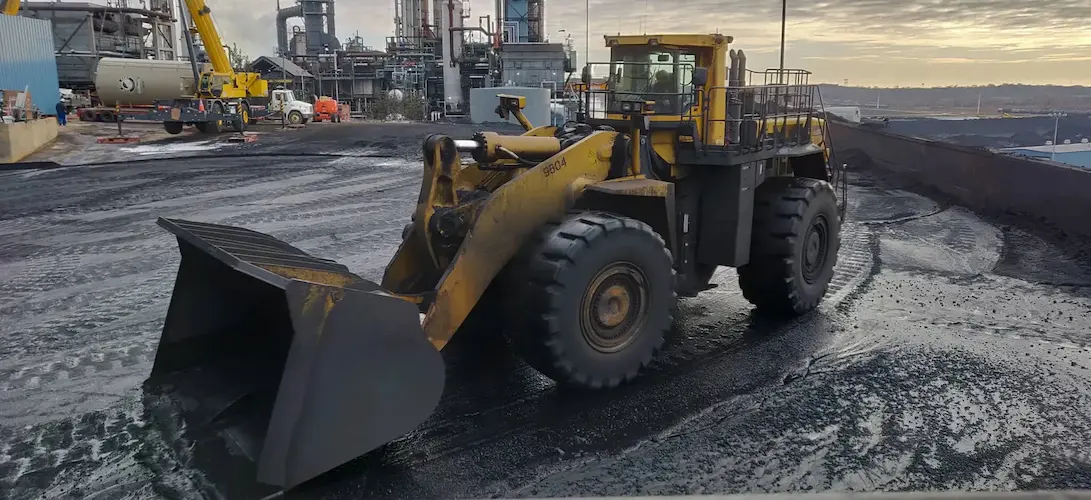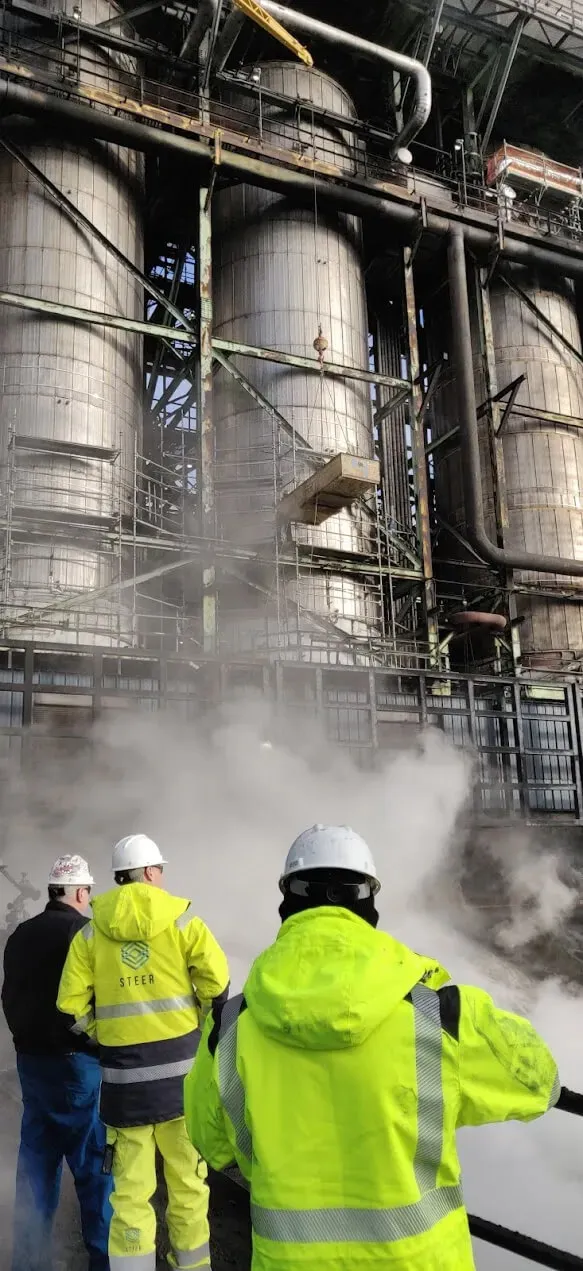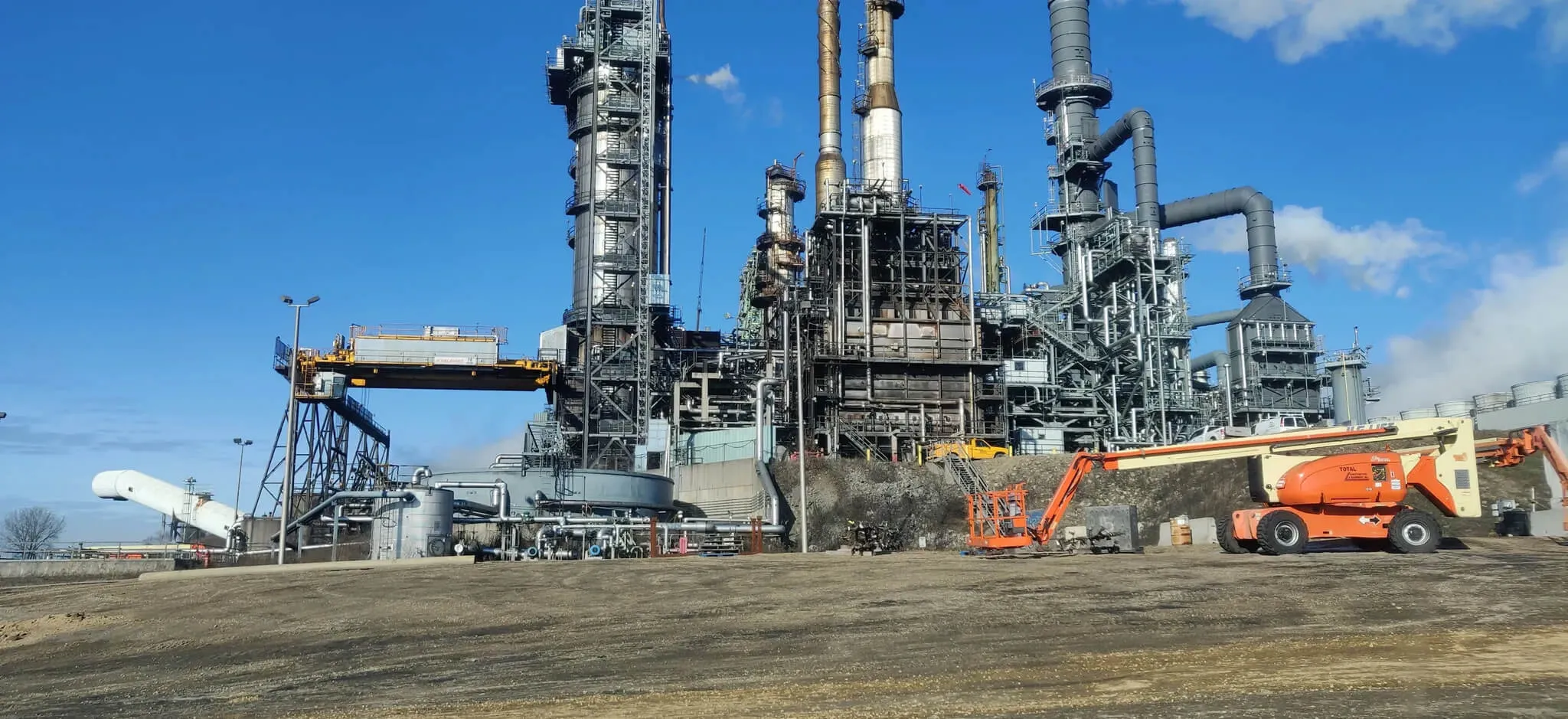
Steer completed a feasibility study at the Flint Hills Resources refinery located in Minnesota, USA. The study focused on improving safety and productivity in the handling of petroleum coke (petcoke)—a challenging operation due to hazardous working conditions, unpredictable material flows, and poor GNSS coverage.
Working with Flint Hills and its parent company, Koch Industries, Steer investigated the potential for implementing remote-controlled and semi-autonomous wheel loaders, as well as operator assistance systems designed for environments with near-zero visibility.
Flint Hills Resources is a major refining, chemicals, and biofuels company based in the U.S., and operates one of the largest refineries in the Midwest, located near Rosemount, Minnesota. It is a subsidiary of Koch Industries, one of the largest privately held corporations in the world, with diverse operations across energy, manufacturing, and technology sectors.
At the Minnesota site, Flint Hills produces significant volumes of petcoke as a byproduct of heavy crude oil refining.
.webp)
Petcoke (short for petroleum coke) is a solid carbon material formed in coker towers during the final stage of the oil refining process. The process involves:
Thermal cracking of heavy residual oils in vertical delayed coker towers.
The solid petcoke is left behind as fuel-rich residue.
It is then cut from the towers using high-pressure water jets, causing it to fall in large chunks to ground level.
Applications of petcoke include:
Industrial fuel in cement kilns and power generation.
Raw material for metallurgical processes (e.g., aluminum and steel).
Occasionally used in gasification processes for syngas production.
Operating heavy equipment in petcoke environments introduces several major challenges:
Extreme Smoke and Fumes: Dense hydrocarbon gases and fine dust particles severely limit visibility and create a hazardous atmosphere for operators.
Risk of Collapse: When petcoke is released from the coker towers, large volumes can fall with little warning, posing a danger to manned vehicles.
GNSS-Denied Conditions: Overhead towers, steel infrastructure, and particulate interference result in unreliable GNSS signals, which undermines traditional autonomous vehicle navigation.

Steer’s study evaluated both the technological and operational feasibility of modernizing loader operations under these constraints. The work focused on two primary technology areas:
Steer developed concepts for implementing remote and partially autonomous control systems on:
Komatsu WA800 and WA900 wheel loaders
Sennebogen material handler
The solution allows operators to control machines from a safe, remote location, especially during high-risk operations such as coke drop events.
Semi-autonomous functions, including path following and obstacle detection, help reduce operator load during repetitive tasks and enable safer operation in visually and signal-obstructed zones.
The team also evaluated advanced operator assistance systems combining:
Camera-based perception
Radar and LiDAR
Sensor fusion for localization without GNSS
These systems assist loader operators in navigating safely when smoke, dust, or vapor reduce visibility to near zero—helping avoid collisions and ensuring productivity in all weather and operational conditions.
The feasibility study concluded that Steer’s technologies can bring significant safety improvements and operational efficiencies to petcoke handling at the Flint Hills site.
Specifically:
Operator risk is reduced through remote control during hazardous events.
Downtime is minimized with smart assistance in harsh visual conditions.
Navigation robustness is improved via GNSS-independent localization methods.
With strong technical validation, the project sets the stage for future deployment, training, and scaling—both at the Minnesota refinery and potentially at other Koch facilities with similar requirements.
